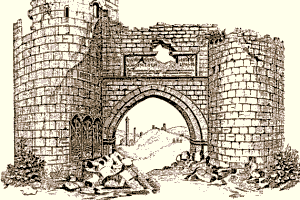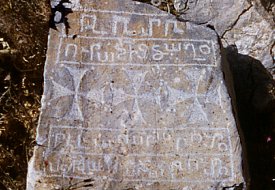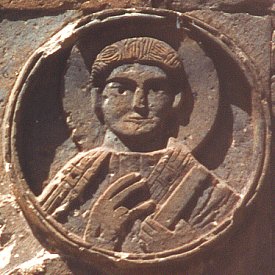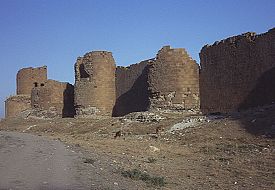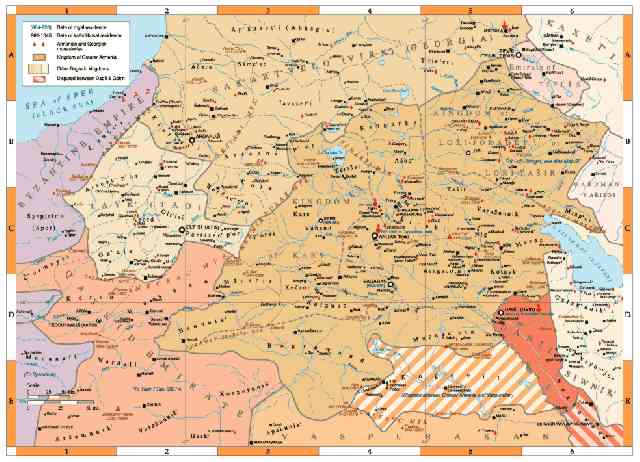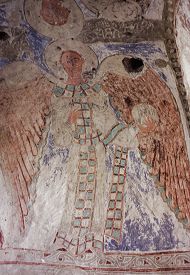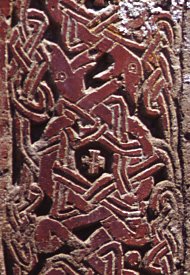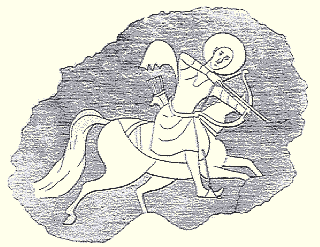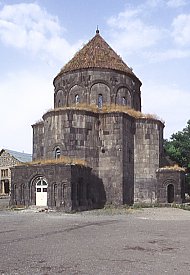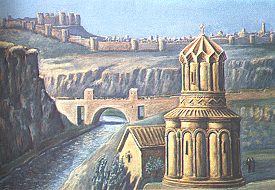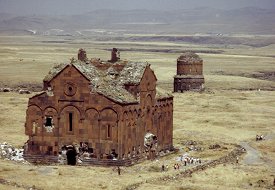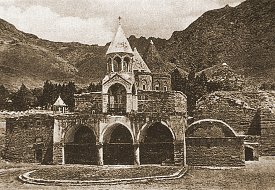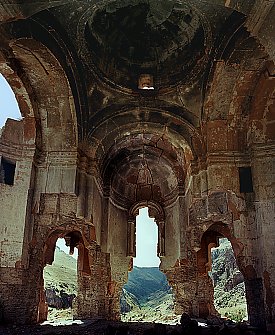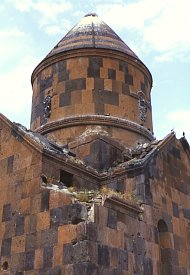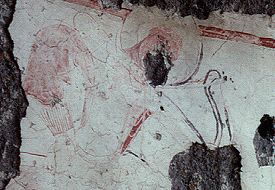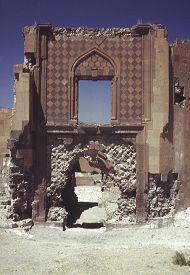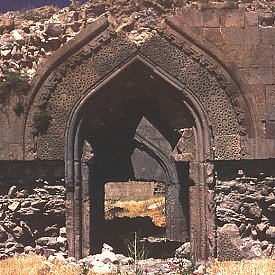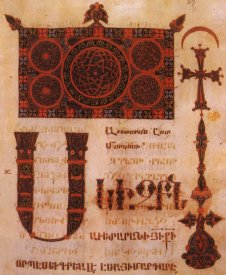|
|
Blogroll
|
|
Most recent articles |
|
Highlights |
|
States and Economies |
|
World economies: 15 of 50 largest economies are U.S. States: |
|
World States – Table 1 |
|
History and Society |
|
Fourth of July aboard the W.W. II aircraft carrier the U.S.S. Hornet |
|
A. L. Kroeber's The Civilization of California's Far Northwest |
|
The Arab Admiralty – and an Arab naval view of the Crusades |
|
Excerpt from “The Wife of Bath's Prologue” by Geoffrey Chaucer |
|
“Horsey” Vikings: exploring origin of the “Rohirrim” in The Lord of the Rings
|
|
The Battle of Crécy by Winston S. Churchill |
|
Monotheistic Paganism, or just what was it Christianity fought and faced? |
|
Medieval constipation advice for travelers: “A ripe turd is an unbearable burden” |
|
Alexis de Tocqueville's bicentennial: Anticipatory censorship in colonial America |
|
Antiquity vs. Modernity: Alexis de Tocqueville on the mind of the slaveholder vs. soul of America |
|
Federalism, and Alexis de Tocqueville on the origins of American democracy |
|
Science, Technology, Space |
|
Looking in the right direction – towards the future – with regard to global warming |
|
Know Your Neighborhood: from Andromeda to Fermions and Bosons |
|
Magnetars and Pulsars: Science's special section on pulsars |
|
The Geneva-Copenhagen Survey of Sun-like Stars in the Milky Way |
|
Galactic Central: the Black Hole at the Center of the Galaxy |
|
Politics and War |
|
America’s strong arm, wielding the Sword of Iraq, slays the multi-headed Hydra of Al Qaeda |
|
Regional and Personal |
|
Tamara Lynn Scott |
What wailing wight
Calls the watchman of the night?
William Blake
Whirl is king
Aristophanes
“Jumping into hyperspace ain't like dustin' crops, boy.”
Han Solo, another galaxy
|
Blogroll |
|
Grand Central Station |
|
Legal and Economic |
|
History and Society |
|
Science, Technology, Space |
|
Politics and War |
|
Eclectic |
|
Regional |
|
Reciprocal |
© Copyright 2002 – 2009
Michael Edward McNeil
Impearls: 2004-06-20 Archive
Earthdate 2004-06-26
| Greater Armenia |
Joel in his intriguing Far Outliers blog, which we've had occasion to mention before here at Impearls, has been quoting from Robert D. Kaplan's year 2000 book Eastward to Tartary: Travels in the Balkans, the Middle East, and the Caucasus, providing fascinating glimpses of Armenia, Trabzon (the medieval Byzantine city of Trebizond) and other formerly Armenian-populated portions of present day Turkey, as well as of Azerbaijan.
Our only disappointment is that Kaplan provides too scanty a view of Armenian history, most particularly the medieval period when Greater Armenia, including far more than the present Armenian Republic, was in its heyday. To remedy this drawback Impearls proceeds to reveal its own look at medieval Armenian history, drawing from a now public-domain chapter in the first edition of the renowned Cambridge Medieval History, by early twentieth century French scholar of Armenia Frédéric Macler (1869-1938), Professor of Armenian for many years at the École nationale des Langues orientales vivantes, Paris. 1
We will also make frequent reference to the splendid pictorial “VirtualAni” site, which folks definitely ought not miss.
Following is an index of the parts into which Frédéric Macler's chapter “Armenia” has been divided:
Greater Armenia→ Introduction
→ The Arab Conquest
→ Recovery and Independence
→ The Arabs return, but are driven out
→ (Mostly) Peace and prosperity
→ Greeks and Turks
→ Little Armenia and Aftermath
→ Acknowledgments and References
→ (End)
UPDATE: 2004-07-03 17:50 UT: Corrected a few typos; modified photograph usage at the request of VirtualAni.
UPDATE: 2004-07-13 14:00 UT: Joel at Far Outliers, whose posting inspired this whole thing, has linked back to this article (under the title “Greater Armenia Impearled”) with lengthy quotations and the comment, “To add depth to the brief mentions of Armenia on this blog and elsewhere, the wonderfully informative Impearls ‘proceeds to reveal its own look at medieval Armenian history […].’ I'll post just a few paragraphs from each part. Visit Impearls for the rest, plus illustrations, maps, notes, and acknowledgments.”
Jakub at a site called Social Bookmarks has linked to this piece, under the title “Medieval Armenia.”
Nathan at an interesting blog I hadn't previously been aware of called The Argus, devoted as it says to “watching Central Asia and the Caucasus,” linked to this article, commenting “The extent of my what I can say I definitely know about Armenia is its location and that it has a long and fascinating history. Joel points to a series of posts from Impearls on Medieval Armenia. Don't miss it!”
Matt at another blog new to me called Blogrel (which I'd thought was a cute bloggish pun on “doggerel,” but is actually a union of “blog” plus the word grel meaning “to write” in Armenian) then linked to the piece, adding: “Impearls has a detailed post about Greater Armenia (Via The Argus). It's an ‘all you ever wanted to know about historical Armenia but were afraid to ask.’ […] This is a novel use of a blog. A blog about history. One thing is I don't see any way to make comments, but maybe that's a good idea. Make sure you have a good cup of haykakan surtch and read the full post.”
Last but not least, Geitner Simmons at his wide-ranging Regions of Mind blog, has linked to the Armenia piece (along with our Northwestern California article) with the comment: “Michael McNeil continues to demonstrate creativity at his blog Impearls. Michael has put together a spectacular package about early Armenian history. In another post, he examines some aspects of natural history in California's Klamath Mountains. The graphics are first-rate — a wide range of architectural and cultural images involving Armenia, plus a terrific satellite photo and mountain images in regard to northwestern California. Michael's look at Armenia underscores the devastation and brutality involved as warring empires and kingdoms struggled for control.” Geitner illustrates with his own striking photo of a structure dating from early medieval Armenia.
UPDATE: 2009-11-09 13:10 UT: Updated to fix broken picture links, and a couple of lingering typos.
Labels: ancient Rome, antiquity, Arab civilization, Armenia, Byzantium, medieval
| Introduction by Frédéric Macler |
Lying across the chief meeting-place of Europe and Asia, Armenia suffered immeasurably more from the conflict of two civilisations than it profited by their exchange of goods and ideas. If the West penetrated the East under pressure from Rome, Byzantium, or crusading Europe, if the East moved westwards, under Persian, Arab, Mongol, or Turk, the roads used were too often the roads of Armenia.
This was not all. East and West claimed and fought for control or possession of the country. Divided bodily between Rome and Persia in pre-Christian times, an apple of discord between Persia and the Byzantine Empire during the early part of the Middle Ages, Armenia for the rest of its national history was alternately the prey of Eastern and Western peoples. When the Armenian kingdom was strong enough to choose its own friends, it turned sometimes to the East, sometimes to the West. It drew its culture from both. But, belonging wholly neither to West nor to East, it suffered consistently at the hands of each in turn and of both together.
The stubborn pride of the Armenians in their national Church prevented them from uniting permanently either with Christendom or with Islâm. Though driven by eastern pressure as far west as Cilicia, where it was in touch with the Crusaders, Armenia never held more than a doubtful place in the state-system of medieval Europe. Sooner than sink their identity in Greek or Roman Church, the Armenians more than once chose the friendship of infidels. On the other hand, whether as neighbours or as enemies, as allies or as conquerors, the races of the East could never turn the Armenians from their faith. When Armenia ceased to exist as a State, its people kept alive their nationality in their Church. As with the Jews, their ecclesiastical obstinacy was at once their danger and their strength: it left them friendless, but it enabled them to survive political extinction.
Isolated by religion, Armenia was also perpetually divided against itself by its rival princes. Like the Church, the numerous princely houses both preserved and weakened their country. They prevented the foundation of a unified national State. But a large Power stretching perhaps from Cappadocia to the Caspian borders, and disabled by ill-defined frontiers, could never have outfaced the hostility of Europe and Asia. A collection of small principalities, grouped round rocky strongholds difficult of access, had always, even after wholesale conquest, a latent faculty of recovery in the energy of its powerful families. The Arabs could have destroyed a single royal line, but, slaughter as they might, Armenia was never leaderless: they could not exterminate its nobility. The political history of Armenia, especially during the first half of the Middle Ages, is a history of great families. And this helps to explain the puzzling movement of Armenian boundaries — a movement due not only to pressure from outside, but also to the short-lived uprising, first of one prince, then of another, amidst the ruin, widespread and repeated, of his country.
During the triumph of Rome and for many generations of Rome's decline Armenia was ruled by a national dynasty related to the Arsacidae, kings of Parthia (b.c. 149 − a.d. 428). The country had been for many years a victim to the wars and diplomacy of Persia and Rome when in a.d. 386−7 it was partitioned by Sapor III and the Emperor Theodosius. From 387 to 428 the Arsacid kings of Armenia were vassals of Persia, while the westernmost part of their kingdom was incorporated in the Roman Empire and ruled by a count.
The history of the thousand years that followed (428−1473) is sketched in this chapter. {Note: except for consideration of an aftermath of the medieval period, in the more detailed sketch below we end soon after the start of the twelfth century – Ed.} It may be divided into five distinct periods. First came long years of anarchy, during which Armenia had no independent existence but was the prey of Persians, Greeks, and Arabs (428−885). Four and a half centuries of foreign domination were then succeeded by nearly two centuries of autonomy. During this second period Armenia was ruled from Transcaucasia by the national dynasty of the Bagratuni. After 1046, when the Bagratid kingdom was conquered by the Greeks, who were soon dispossessed by the Turks, Greater Armenia never recovered its political life.
Meanwhile the third period of Armenia's medieval history had opened in Asia Minor, where a new Armenian State was founded in Cilicia by Prince Ruben, a kinsman of the Bagratuni. From 1080−1340 Rubenian and Hethumian princes ruled Armeno-Cilicia, first as lords or barons (1080−1198), then as kings (1198−1342). During this period the Armenians engaged in a successful struggle with the Greeks, and in a prolonged and losing contest with the Seljûqs and Mamlûks. Throughout these years the relations between the Armenian rulers and the Latin kingdoms of Syria were so close that up to a point the history of Armeno-Cilicia may be considered merely as an episode in the history of the Crusades. This view is strengthened by the events of the fourth period (1342−1373), during which Cilicia was ruled by the crusading family of the Lusignans. When the Lusignan dynasty was overthrown by the Mamlûks in 1375, the Armenians lost their political existence once more. In the fifth and last period of their medieval history (1375−1473), they suffered the horrors of a Tartar invasion under Tamerlane and finally passed under the yoke of the Ottoman Turks.
| The Arab Conquest by Frédéric Macler |
When Ardashes, the last Arsacid vassal-king, was deposed in 428, Armenia was governed directly by the Persians, who already partly controlled the country. No strict chronology has yet been fixed for the centuries of anarchy which ensued (428−885), but it appears that Persian rule lasted for about two centuries (428−633). Byzantine rule followed, spreading eastward from Roman Armenia, and after two generations (633−693) the Arabs replaced the Greeks and held the Armenians in subjection until 862.
In this long period of foreign rule, the Armenians invariably found a change of masters a change for the worse. The Persians ruled the country th{r}ough a succession of Marzpans, or military commanders of the frontiers, who also had to keep order and to collect revenue. With a strong guard under their own command, they did not destroy the old national militia nor take away the privileges of the nobility, and at first they allowed full liberty to the Katholikos and his bishops. As long as the Persians governed with such tolerance, they might fairly hope to fuse the Armenian nation with their own. But a change of religious policy under Yezdegerd II and Piroz roused the Armenians to defend their faith in a serious of religious wars lasting until the end of the sixth century, during which Vardan with his 1036 companions perished for the Christian faith in the terrible battle of Avaraïr (454). But, whether defeated or victorious, the Armenians never exchanged their Christianity for Zoroastrianism.
On the whole, the Marzpans ruled Armenia as well as they could. In spite of the religious persecution and of a dispute about the Council of Chalcedon between the Armenians and their fellow-Christians in Georgia, the Armenian Church more than held its ground, and ruined churches and monasteries were restored or rebuilt towards the opening of the seventh century. Of the later Marzpans some bore Armenian names. The last of them belonged to the Bagratuni family which was destined to sustain the national existence of Armenia for many generations against untold odds. But this gleam of hope was extinguished by the fall of the Persian Empire before the Arabs. For when they conquered Persia, Armenia turned to Byzantium, and was ruled for sixty years by officials who received the rank of Curopalates and were appointed by the Emperor (633−693). The Curopalates, it appears, was entrusted with the civil administration of the country, while the military command was held by an Armenian General of the Forces.
Though the Curopalates, too, seems to have been always Armenian, the despotic yoke of the Greeks was even harder to bear than the burden of religious wars imposed by the Persians. If the Persians had tried to make the Armenians worship the Sacred Fire, the Greeks were equally bent on forcing them to renounce the Eutychian heresy. As usual, the Armenians refused to yield. The Emperor Constantine came himself to Armenia in 647, but his visit did nothing to strengthen Byzantine authority. The advance of the Arabs, who had begun to invade Armenia ten years earlier under ‘Abd-ar-Rahîm, made stable government impossible, for, sooner than merge themselves in the Greek Church, the Armenians sought Muslim protection. But the Arabs exacted so heavy a tribute that Armenia turned again to the Eastern Empire. As a result, the Armenians suffered equally from Greeks and Arabs. When they paid tribute to the Arabs, the Greeks invaded and devastated their land. When they turned to the Greeks, the Arabs punished their success and failure alike by invasion and rapine. Finally, at the close of the seventh century, the Armenian people submitted absolutely to the Caliphate. The Curopalates had fled, the General of the Forces and the Patriarch (Katholikos) Sahak IV were prisoners in Damascus, and some of the Armenian princes had been tortured and put to death.
A period of unqualified tyranny followed. The Arabs intended to rivet the chains of abject submission upon Armenia, and to extort from its helplessness the greatest possible amount of revenue. Ostikans, or governors, foreigners almost without exception, ruled the country for Baghdad. These officials commanded an army, and were supposed to collect the taxes and to keep the people submissive. They loaded Armenia with heavy imposts, and tried to destroy the princely families by imprisoning and killing their men and confiscating their possessions. Under such treatment the Armenians were occasionally cowed but usually rebellious. Their national existence, manifest in rebellion, was upheld by the princes. First one, then another, revolted against the Muslims, made overtures to the enemies of Baghdad, and aspired to re-found the kingdom of Armenia.
Shortly after the Arab conquest, the Armenians turned once more to their old masters, the Greeks. With the help of Leo the Isaurian, Smbat (Sempad) Bagratuni defeated the Arabs, and was commissioned to rule Armenia by the Emperor. But after a severe struggle the Muslims regained their dominion, and sent the Arab commander Qâsim to punish the Armenians (704). He carried out his task with oriental ferocity. He set fire to the church of Nakhijevan, into which he had driven the princes and nobles, and then pillaged the country and sent many of the people into captivity.
These savage reprisals were typical of Arab misrule for the next forty years, and after a peaceful interval during which a friendly Ostikan, Marwân, entrusted the government of Armenia to Ashot Bagratuni, the reign of terror started afresh (758). But, in defiance of extortion and cruelty, insurrection followed insurrection. Local revolts, led now by one prince, now by another, broke out. On one occasion Mushegh Mamikonian drove the Ostikan out of Dwin, but the Armenians paid dear for their success. The Arabs marched against them 30,000 strong; Mushegh fell in battle, and the other princes fled into strongholds (780). Though in 786, when Hârûn ar-Rashîd was Caliph, the country was for the time subdued, alliances between Persian and Armenian princes twice ripened into open rebellion in the first half of the ninth century. The Arabs punished the second of these unsuccessful rebellions by wholesale pillage and by torture, captivity, and death (c. 850).
| Recovery and Independence by Frédéric Macler |
As the long period of gloom, faintly starred by calamitous victories, passed into the ninth century, the Arab oppression slowly lightened. The Abbasid Empire was drawing to its fall. While the Arabs were facing their own troubles, the Armenian nobility were founding principalities. The Mamikonian family, it is true, died out in the middle of the ninth century without founding a kingdom. Yet, because they had no wide territories, they served Armenia disinterestedly, and though of foreign origin could claim many of the national heroes of their adopted country: Vasak, Mushegh, and Manuel, three generals of the Christian Arsacidae; Vardan, who died for the faith in the religious wars; Vahan the Wolf and Vahan Kamsarakan, who fought the Persians; David, Grigor, and Mushegh, rebels against Arab misrule. The Arcruni and the Siwni, who had also defended Armenia against the Arabs, founded independent states in the tenth century. The Arcruni established their kingdom (Vaspurakan) round the rocky citadel of Van, overlooking Lake Van (908). Later, two different branches of their family founded the two states of the Reshtuni and the Antsevatsi. The Siwni kingdom (Siunia) arose in the latter half of the century (970). Many other principalities were also formed, each claiming independence, the largest and most important of them all being the kingdom of the Bagratuni.
Like the Mamikonians, the Bagratuni seem to have come from abroad. According to Moses of Chorene, they were brought to Armenia from Judaea by Hratchea, son of Paroïr, in b.c. 600. In the time of the Parthians, King Valarsaces gave to Bagarat the hereditary honour of placing the crown upon the head of the Armenian king, and for centuries afterwards Bagarat's family gave leaders to the Armenians. Varaztirots Bagratuni was the last Marzpan of the Persian domination, and the third Curopalates of Armenia under the Byzantine Empire. Ashot (Ashod) Bagratuni seized the government when the Arabs were trying to dislodge the Greeks in the middle of the seventh century, and foreshadowed the later policy of his family by his friendliness towards the Caliph, to whom he paid tribute. He fell in battle, resisting the Greeks sent by Justinian II. Smbat Bagratuni, made general of the forces by Justinian, favoured the Greeks. Escaping from captivity in Damascus, it was he who had defeated the Arabs with the help of Leo the Isaurian, and governed the Armenians from the fortresses of Taïkh. In the middle of the eighth century, another Ashot reverted to the policy of his namesake, and was allowed by Marwân, the friendly Ostikan, to rule Armenia as “Prince of Princes.” In consequence he refused to rebel with other Armenian princes when the Arab tyranny was renewed, and for his loyalty was blinded by his compatriots. Of his successors, some fought against the Arabs and some sought their friendship; Bagratuni princes took a leading part on both sides in the Armeno-Persian rebellions suppressed by the Arabs in the first half of the ninth century.
The Bagratuni were also wealthy. Unlike the Mamikonians, they owned vast territories, and founded a strong principality in the country of Ararat. Their wealth, their lands, and their history made them the most powerful of Armenian families and pointed out to them a future more memorable than their past. Midway in the ninth century, the power of the Bagratuni was inherited by Prince Ashot. The son of Smbat the Confessor, he refounded the ancient kingdom of Armenia and gave it a dynasty of two centuries' duration. Under the rule of the Bagratuni kings Armenia passed through the most national phase of its history. It was a conquered province before they rose to power, it became more European and less Armenian after their line was extinct. Like Ashot himself, his descendants tried at first to control the whole of Armenia, but from 928 onwards they were obliged to content themselves with real dominion in their hereditary lands and moral supremacy over the other princes. This second and more peaceful period of their rule was the very summer of Armenian civilisation.
Ashot had come into a great inheritance. In addition to the provinces of Ararat and Taïkh, he owned Gugarkh and Turuberan, large properties in higher Armenia, as well as the towns of Bagaran, Mush, Kolb, and Kars with all their territory. He could put into the field an army of forty thousand men, and by giving his daughters in marriage to the princes of the Arcruni and the Siwni he made friends of two possible rivals. For many years his chief desire was to pacify Armenia and to restore the wasted districts, and at the same time to earn the favour of the Caliphate. In return, the Arabs called him “Prince of Princes” (859) and sent home their Armenian prisoners. Two years later Ashot and his brother routed an army, double the size of their own, led into Armenia by Shahap, a Persian who was aiming at independence. Ashot's politic loyalty to the Arabs finally moved the Caliph Mu‘tamid to make him King of Armenia (885−7), and at the same time he likewise received a crown and royal gifts from the Byzantine Emperor, Basil the Macedonian. But Armenia was not even yet entirely freed from Arab control. Tribute was paid to Baghdad not immediately but through the neighbouring Ostikan of Azerbâ’îjân, and the coronation of Armenian kings waited upon the approval of the Caliphs.
During his brief reign of five years, Ashot I revived many of the customs of the old Arsacid kingdom which had perished four and a half centuries earlier. The crown, it seems, was handed down according to the principle of primogeniture. The kings, though nearly always active soldiers themselves, do not appear to have held the supreme military command, which they usually entrusted to a “general of the forces,” an ancient office once hereditary in the Mamikonian family, but in later times often filled by a brother of the reigning king. In Ashot's time, for instance, his brother Abas was generalissimo, and after Ashot's death was succeeded by a younger brother of the new king.
The Katholikos was, after the king, the most important person in Armenia. He had been the only national representative of the Armenians during the period of anarchy when they had no king, and his office had been respected by the Persians and used by the Arabs as a medium of negotiation with the Armenian princes. Under the Bagratid kings, the Katholikos nearly always worked with the monarchy, whose representatives it was his privilege to anoint. He would press coronation upon a reluctant king, would mediate between kings and their rebellious subjects, would lay the king's needs before the Byzantine court, or would be entrusted with the keys of the Armenian capital in the king's absence. Sometimes in supporting the monarchy he would oppose the people's will, especially in a later period, when, long after the fall of the Bagratuni dynasty, King and Katholikos worked together for religious union with Rome against the bitter hostility of their subjects.
Ashot made good use of every interval of peace by restoring the commerce, industry, and agriculture of his country, and by re-populating hundreds of towns and villages. For the sake of peace he made alliances with most of the neighbouring kings and princes, and after travelling through his own estates and through Little Armenia, he went to Constantinople to see the Emperor Leo the Philosopher, himself reputedly an Armenian by descent. The two monarchs signed a political and commercial treaty, and Ashot gave the Emperor an Armenian contingent to help him against the Bulgarians.
Ashot died on the journey home, and his body was carried to Bagaran, the old city of idols, and the seat of his new-formed power. But long before his death, his country's peace, diligently cherished for a life-time, had been broken by the Armenians themselves. One after another, various localities, including Vanand and Gugarkh, had revolted, and although Ashot had been able to restore order everywhere, such disturbances promised ill for the future. The proud ambition of these Armenian princes had breathed a fitful life into a conquered province only to sap the vitality of an autonomous kingdom.
| The Arabs return, but are driven out by Frédéric Macler |
Under Smbat I (892−914) the lesser princes did more mischief than under his father Ashot because they made common cause with the Arabs of Azerbâ’îjân, who hated Armenia. For more than twenty years Smbat held his kingdom against the persistent attacks, now separate, now connected, of the Ostikans of Azerbâ’îjân and of the Armenian princes, and for more than a generation he and his son looked perforce to the Greeks as their only source of external help.
As soon as Smbat had defeated his uncle Abas, who had tried to seize the throne in the first year of his reign, he turned to face Afshîn, Ostikan of Azerbâ’îjân. Afshîn protested against the renewal of the Greco-Armenian alliance and twice invaded Armenia. On the first occasion Smbat not only forced the Arabs to retire by a display of his strength, but made conquests at their expense. He seized Dwin, the capital of the Arab emirs, and sent the Musulman chiefs captive to the Emperor Leo (894). A year later Dwin was almost entirely destroyed by an earthquake. The second time the Arabs invaded Armenia, Smbat, though taken by surprise, cut their army to pieces at the foot of Mount Aragatz (or Alagöz). Afshîn then provoked rebellion among the Armenian princes, but without seriously weakening Smbat. At last, through Armenian treachery, Smbat was defeated by Ahmad, Ostikan of Mesopotamia, who had invaded the province of Taron. Afshîn took advantage of this reverse to invade Armenia for the third time. Smbat retired to Taïkh, but Kars, the refuge of the queen, capitulated to Afshîn, who took Smbat's son as hostage and his daughter as wife. Not long after, Afshîn died, and the hostages were given back (901). Smbat took this opportunity to obtain from the Caliph both exemption from the authority of the Ostikan of Azerbâ’îjân and also permission to pay the annual tribute direct to Baghdad (902).
Afshîn's feud with Armenia was renewed by his brother Yûsuf. Urging that the separation of Armenia and Azerbâ’îjân gave dangerous liberty to the Armenians, he invaded the country. Smbat's troops frightened him into retreat before he had struck a blow, but he soon obtained help from some Armenian princes who were restive under heavy taxation. Constrained to retire into the “Blue Fortress” with a handful of men, Smbat assaulted the Muslim and Christian besiegers with great success, and after withstanding a year's siege he capitulated only on receiving a promise that the lives of the garrison should be spared (913). Yûsuf broke his promise. He tortured Smbat for a year, and finally put him to death (914). The Armenian princes retired into fortresses, and Armenia fell once more under the Arab yoke. For several years Yûsuf sent fresh troops into Armenia and organised the devastation of the country from his headquarters at Dwin. No crops were sown, and a terrible famine resulted. It is reported that parents even sold their children to escape death and that some ate human flesh (918).
But the triumph of Yûsuf was short. In the first year of the Arab occupation, Smbat's son, Ashot II, surnamed Erkath, the Iron, had already avenged his father's death by routing the invaders and reconquering the fortresses they held. In 915 the Armenian princes had issued from their strongholds to declare him king. Several years later he visited Byzantium, where the Katholikos had interested the court in the troubles of Armenia, and returned home with a force of Greek soldiers. His reign was one of incessant struggle against the Arabs and the Armenian princes (915-928).
To thwart the new-born power of Armenia, Yûsuf crowned a rival king and provoked a fierce civil war, which was finally ended through the mediation of John, the Katholikos. Many other internal revolts followed, but Ashot suppressed them all, and Yûsuf turned aside to attack the peaceful kingdom of Van. Here, too, he was unsuccessful, but he appointed a new Ostikan of Armenia. The purpose of this new Ostikan and of his successor Bêshir was to capture the Armenian king and the Katholikos. But Ashot retired to the island of Sevan, and built ten large boats. When Bêshir marched against him with a strong army, he manned each boat with seven skilled archers and sent them against the enemy. Every Armenian arrow found its mark, the Arabs took to flight, and were pursued with slaughter as far as Dwin by Prince Gêorg Marzpetuni, Ashot's faithful supporter. After this epic resistance, Ashot left Sevan in triumph, and took the title “King of Kings of Armenia” in token of his superiority to the other Armenian princes. He died in 928.
| (Mostly) Peace and prosperity by Frédéric Macler |
Two reigns of perpetual warfare were followed by nearly a century of comparative peace (928−1020). Ashot's successors were content with more modest aims. At home they confined their real rule to their own patrimony and exercised only a moral sway over the other Armenian States. Abroad they sought the favour of the Arabs, rather than that of the Greeks. In this way alone was it possible to secure a measure of peace.
Ashot II was succeeded by his brother Abas (928−951), who concluded a treaty with the Arabs of Dwin and exchanged Arab for Armenian prisoners. He restored towns and villages and built churches. But when he built the cathedral of Kars, he brought not peace but a sword to his countrymen. Ber, King of the Abasgians (Abkhaz), wanted the cathedral to be consecrated according to Greek rites. On the banks of the Kûr, Abas defeated him twice to cure him of error, and then blinded him for having looked on the building with impious eyes.
Ashot III (952−977) adopted a conciliatory policy. When his rebellious brother Mushel founded a kingdom in Vanand with Kars for its capital (968), Ashot entered into friendly relations with him. He earned the good will of Baghdad by defeating a rebel who had thrown Azarbâ’îjân and Mesopotamia into confusion. Side by side with a prince of the Arcruni family he faced the Emperor John Tzimisces, who came eastward to fight the Arabs and who seemed to threaten Armenia by pitching his camp in Taron. Baffled by the bold front of Ashot's army, eighty thousand strong, the Emperor demanded and received an Armenian contingent, and marched away from the frontier.
By such circumspect action, Ashot III gave peace to Armenia. He reorganised the army and could put into the field a host of ninety thousand men. Surpassing his predecessors in the building of pious foundations, he bestowed great revenues on convents, churches, hospitals, and almshouses. He made Ani his capital and laid the foundations of its greatness. He was known as Olormadz, the Pitiful, for he never sat down to meals without poor and impotent men about him.
Ashot's son Smbat II (977−990) was a lover of peace and a great builder like his father. But he was forced into war with his rebellious uncle Mushel, King of Vanand, and before his death he angered the Church by marrying his niece.
Under his brother and successor, Gagik I (990−1020), the Armenians enjoyed for a whole generation the strange experience of unbroken prosperity. Gagik was strong enough to prevent foreigners from attacking him, and to gain the friendship of the other Armenian princes. Free from war, he used all his time and energy to increase the moral and material welfare of his people. He enriched the pious foundations that dated from the time of his brother and father, and appropriated great revenues to churches and ecclesiastics, taking part himself in religious ceremonies. In his reign the civilisation of Armenia reached its height. Flourishing in the unaccustomed air of peace, convents and schools were centres of light and learning; commercial towns such as Ani, Bitlis, Ardzen, and Nakhijevan, became wealthy marts for the merchandise of Persia, Arabia, and the Indies. Agriculture shared in the general prosperity. Goldsmiths, much influenced by Persian models, were hard at work, and coppersmiths made the plentiful copper of the country into objects of every description. Enamelling flourished in neighbouring Georgia, but no Armenian enamel survives to tell whether the art was practised in Armenia itself.
Armenian culture was pre-eminently ecclesiastical. Its literature did include chronicles and secular poems, but was overwhelmingly religious as a whole. Armenian manuscripts, famous alike for their antiquity, their beauty, and their importance in the history of writing, are nearly all ecclesiastical. Most interesting of all in many ways (especially for the comparison of text and variant readings) are the numerous copies of the Gospels. The Moscow manuscript (887) is the earliest Armenian manuscript actually dated, and two very beautiful Gospels of a later date are those of Queen Melkê and of Trebizond. A collection of theological and other texts executed between 971 and 981 is their earliest manuscript written on paper. Other important writings were dogmatic works, commentaries, and sharakans or sacred songs composed in honour of church festivals. Armenian art, again, was mainly ecclesiastical, and survives, on the one hand in the illuminations and miniatures which adorn the sacred texts, and, on the other, in the ruined churches and convents which still cover the face of the country. Architecture was military as well as ecclesiastical, but it is hard not to believe that the people of Ani were prouder of their galaxy of churches than they were of their fortress, their walls, and their towers.
In the tenth century, especially after a branch of the Bagratuni had founded an independent State in Vanand (968), the intellectual focus of Armenia seems to have been Kars, with its crown of young Armenian students who came there to study philosophy, belles-lettres, and theology. But the true centre and most splendid proof of Armenian civilisation was Ani, city of forty keys and a thousand and one churches. In the eighth century no more than a village, it slowly grew larger and more populous. Ashot I and Ashot III were crowned at Ani, and there Ashot III established the throne of the Bagratuni dynasty. He defended the city with a fortress, and his queen enriched it with two fine convents, but the most splendid buildings were added by Smbat II, who also fortified Ani on the north with a double line of walls and towers and a great ditch of stone. The citadel was defended on the east and south by the river Akhurian, and on the west by the Valley of Flowers. Among the magnificent palaces and temples, richly adorned with mosaics and inscriptions, stood the cathedral, masterpiece of the famous architect Trdat (Tiridates), built on Persian and Byzantine lines.
This mixture of architectural styles is typical of the national art of Armenia, which betrays a subtle mingling of Persian, Arab, and Byzantine influences. The churches of Sevan, of Digor, and Keghard near Erivan, even the Armenian church of Paris in the Rue Jean-Goujon, still symbolise the desperate battle the Armenians had to fight against the foreigner, and still suggest that the only way of maintaining the unequal struggle was to turn the encroaching elements to the service of the Armenian Church, dearest and most inviolable stronghold of Armenian nationality.
Under Gagik I that nationality seemed safe.
His reign proved Armenia's capacity for quick recovery, and promised the country a fair future if peace could be kept.
But the universal grief at Gagik's death was unconscious mourning for the end of prosperity.
It presaged the slow declension of Armenia from national pride to servitude, and the gradual passing of the royal house from kingly power to exile and extinction.
| Greeks and Turks by Frédéric Macler |
Two generations of misfortune (1020−1079) opened with civil war. Gagik had left two sons. His successor John-Smbat (1020-1040), timid and effeminate, was attacked and defeated by his younger and more militant brother Ashot, who was helped by Senekherim Arcruni, King of Vaspurakan (Van). Peace was concluded through the mediation of the Katholikos Petros Getadartz and Giorgi, King of the Georgians, but only by a division of territory. John-Smbat kept Ani and its dependencies, while Ashot took the part of the kingdom next to Persia and Georgia (Iberia). On the death of either brother the country was to be re-united under the survivor.
But Ashot was discontented. He roused the King of Georgia to attack and imprison John-Smbat, who escaped only by yielding three fortresses to Giorgi. Still unsatisfied, Ashot feigned mortal illness and begged his brother to pay him a last visit. Once by Ashot's bedside John-Smbat saw the trap and begged for his life. Ashot, deceitful to the end, freed him merely to hand him over to Prince Apirat, who promised to kill him at a secret spot. But, visited by sudden remorse, Apirat restored the king to Ani and his throne, and fled himself to Abû’l-Aswâr, governor of Dwin, to escape the wrath of Ashot.
While Ashot schemed against his brother, Armenia was threatened on both sides by different enemies, one old, the other new. The new assailants were the Seljûq Turks, led against Vaspurakan at the opening of John-Smbat's reign by Tughril Beg, whose precursor Hasan had already wasted Mesopotamia. When they had overcome the resistance of Vaspurakan, they advanced into John-Smbat's territory. At the beginning of his reign John-Smbat had had an army of 60,000, but the Armenian generalissimo, Vasak Pahlavuni, had to meet the Turks with a bare five hundred men. Climbing Mount Serkevil to rest, he died there, whether by his own hand, or by treason, or by a rock falling from the mountain while he prayed, is unknown. Meanwhile, Tughril Beg left Armenia for the time and conquered the whole of Persia.
On the west, Armenia was threatened once again by the Byzantine Empire. The Turkish advance, instead of inducing the Greeks to help Armenia, revived in them their old ambition of conquest, with fatal results not only to the Armenians but to themselves. During the reign of John-Smbat this ambition was twice fed by Armenian policy. Conquered and then left by Tughril Beg, Senekherim of Vaspurakan gave up his kingdom to Basil II (1021) in exchange for the town of Sebastea (Sîwâs) rather than wait to offer a second vain resistance to the Turks on their inevitable return. Two years later Basil entered Georgia to repress a revolt in which John-Smbat had been secretly implicated. In fear of the Emperor's wrath John-Smbat violated the treaty he had made with his brother, and through the agency of the Katholikos Petros Getadartz he gave in writing a promise that after his own death Basil should inherit Ani. Basil was well pleased. But some years later his successor Constantine VIII summoned to his death-bed an Armenian priest named Kirakos, and handed him the inequitable document, saying: “Bear this letter to thy king and tell him from me that like other mortals I find myself on the threshold of Eternity, and I would not extort the possession of another. Let him take back his kingdom and give it to his sons.” The mischief might have ended here but for the treachery of the priest, who kept the letter in his own possession and finally sold it for a large sum to Michael IV (1034). Much as his dishonesty cost the Emperor, it was to cost Armenia more.
As soon as John-Smbat was dead, Michael sent an embassy to claim Ani and its dependencies. His chance of success was good, because Ani was divided by two factions. One, led by the generalissimo Vahram Pahlavuni, wished to crown Gagik, the fourteen-year-old nephew and heir of John-Smbat; the other intended to give the crown to Vest Sarkis Siwni, the regent, or failing him to the Emperor Michael. For the moment, party differences were sunk in unanimous denial of Byzantine claims, but Vest Sarkis destroyed this short-lived amity by seizing the State treasure and several strongholds. Vahram's party won a fairer renown by defeating the Greeks, who were sent by the Emperor to take by force what his embassy had failed to win by persuasion. One after another three Greek armies invaded Armenia; each spread desolation far and wide without conquering Ani. Michael then sent a fourth army to besiege Ani while the King of the Albanians (Aluans) invaded the north-east province of Armenia on behalf of the Greeks. Vahram broke up the invading army by a bold attack. The Greeks, terrified by the fury of the Armenians, fled in disorder, leaving twenty thousand dead and wounded beneath the walls of the town. This victory enabled Vahram to crown Gagik II (1042-1046). With a mere handful of men the boy-king recovered the State treasure and the citadel of Ani from Vest Sarkis, whom he cast into prison. Unhindered for the moment by Greek interference or Armenian treachery, Gagik drove out the Turks and began to restore order in the country. But unfortunately for himself and for his people, he was generous enough to forgive Vest Sarkis and to raise him to honour. Posing as the king's friend, this traitor worked to alienate the Armenian princes from Gagik and to encourage the hostile intention of Constantine Monomachus, successor to Michael V.
Constantine copied the Armenian policy of Michael. Failing to secure Ani by negotiation, he sent an army to seize it. Gagik defeated the Greeks and forced them to retire. Like Michael, Constantine then sent a larger army, and at the same time urged Abû’l-Aswâr, governor of Dwin, to harass the Armenians on the east. But Gagik disarmed Abû’l-Aswâr by gifts, and after a short battle put to flight the confident Greeks.
Still Constantine would not give up hope. Where peace and war had failed, trickery might succeed. Inspired by Vest Sarkis, he asked Gagik to come to Constantinople to sign a treaty of perpetual peace, swearing on the cross and the gospels in the presence of Gagik's delegate that he would be true to his word. Unwilling to go himself, and discouraged by the Vahramians, the king ultimately yielded to the evil counsel of Vest Sarkis and passed out of Armenia to his ruin. Before he had spent many days in Constantinople, the Emperor demanded Ani of him, and, when he refused it, imprisoned him on an island in the Bosphorus.When the Armenians heard of the disaster, there was much division among them. Some wanted to deliver Ani to David Anholin of Albania, others to Bagarat, King of Georgia and Abasgia, but the Katholikos Petros, to whom Gagik had entrusted the keys, informed the Emperor that Ani should be his for a consideration. Once assured of a good price for his shameful merchandise, Petros sent the forty keys of the bartered city to Constantine.
Gagik rebelled against the accomplished fact, but finally abdicated his throne, receiving in exchange the town of Bizou in Cappadocia. Here he married the daughter of David, King of Sebastea, and led the wandering life of an exile. After many years, he learnt one day that the Metropolitan, Mark of Caesarea, had named his dog Armên in mockery of the Armenians. Gagik could not stomach the insult, steep it as he must in the bitterness of exile, in hatred of a rival Church, in contempt for a people he had never encountered but as conqueror until they overcame him by guile. To avenge the honour of his country's name, he caused the dog and the ecclesiastic to be tied up together in a sack, and had the animal beaten until it bit its master to death. For this crime against their metropolitan, three Greek brothers seized Gagik by treachery and hanged him in the castle of Cyzistra (1079). He left two sons and a grandson, but they did not long survive him. When the last of them had died in prison, the Bagratuni line was extinct.
During the exile of their king, the Armenians fell a prey to Greek and Turk. At first, not knowing of his abdication, they resisted the Greeks and dispersed the army sent under the command of the eunuch Paracamus to take possession of Ani. But on hearing that Gagik was never again to enter the country, the Armenians lost all heart, and allowed Paracamus to possess the city. Once masters of Armenia, the Greeks committed atrocious cruelties. They exiled or poisoned the princes, replaced Armenian troops by Greek garrisons, and worked for the utter destruction of the country.
But they had reckoned without the Turk. Learning of Armenia's weakness, Tughril Beg returned, and spread ruin and desolation far and wide for several years. He sacked the fortified town of Smbataberd and tortured the inhabitants. The rich commercial town of Ardzen shared the same fate (1049). The Greeks at last determined to make an end of his savagery. Together with Liparid, King of Georgia, their general Comnenus offered battle to the Turks near Bayber. But owing to disagreement among the Christians, the Turks were victorious and carried the King of Georgia into captivity. With no one now to oppose him, Tughril overran most of Armenia except Ani. Vanand resisted in vain, but their failure in the siege of Manzikert forced the Turks to retire. Tughril fell back, only to wreak his vengeance upon Ardskê. His death, like that of the Arab Afshîn long before, brought no relief to Armenia, for like Afshîn, he left a brother, Alp Arslân, to complete his work of destruction. Alp Arslân besieged Ani unsuccessfully for a time, but finally overcame its resistance and sacked the city with unimaginable fury. The river Akhurian ran red with blood; palaces and temples were set on fire and covered thousands of corpses with their ruins (1064). The Turks then invited Vanand to submit. Gagik, the king, feigned friendship and made an alliance with Alp Arslân. But like Senekherim of Van before him, he gave his kingdom to the Eastern Empire in exchange for a stronghold farther west. In 1065 he transported his family to the castle of Dzmndav in Little Armenia. The Greeks, however, could not save Vanand from the Turks, who pushed their conquests as far as Little Armenia. Kars, Karin, Bayber, Sebastea, and Caesarea had submitted to Alp Arslân, when the Emperor Romanus Diogenes opposed him at Manzikert in 1071. The Greeks were defeated, and the Turks led the Emperor into captivity.
By the end of the eleventh century not a vestige remained of Byzantine dominion over Armenia. The Greeks saw too late the fatal consequences of their selfish hostility towards a country which on south and east might have served them as a rampart against their most dangerous foe.
| Little Armenia and Aftermath by Frédéric Macler |
The national history of Greater Armenia ended with the Turkish conquest and with the extinction of the Bagratuni line. Little by little, numbers of Armenians withdrew into the Taurus mountains and the plateau below, but though their country rose again from ruin, it was only as a small principality in Cilicia. The fruits of Armenian civilisation — the architectural splendour of Ani, the military strength of Van, the intellectual life of Kars, the commercial pride of Bitlis and Ardzen — were no more.
Greater Armenia had been eastern rather than western, coming into contact with race after race from the east; with Byzantium alone, half eastern itself, on the west. But the civilisation of Armeno-Cilicia was western rather than eastern: its political interests were divided between Europe and Asia, and its history was overshadowed by that of the Crusades. To the Crusades the change was pre-eminently due. Crusading leaders stood in every kind of relationship to the new Armenian kingdom. They befriended and fought it by turns. They used its roads, borrowed its troops, received its embassies, fought its enemies, and established feudal governments near it. For a time their influence made it a European State, built on feudal lines, seeking agreement with the Church of Rome, and sending envoys to the principal courts of Christendom.
But the Armenian Church, which had been the inspiration and mainstay of the old civilisation, and the family ambitions, which had helped to destroy it, lived on to prove the continuity of the little State of Armeno-Cilicia with the old Bagratid kingdom.
Among the Armenian migrants to the Taurus mountains, during the invasions that followed the abdication of Gagik II, was Prince Ruben (Rupen). He had seen the assassination of Gagik to whom he was related, and he determined to avenge his kinsman's death on the Greeks. Collecting a band of companions, whose numbers increased from day to day, he took up his stand in the village of Goromozol near the fortress of Bardsrberd, drove the Greeks out of the Taurus region, and established his dominion there. The other Armenian princes recognised his supremacy and helped him to strengthen his power, though many years were to pass before the Greeks were driven out of all the Cilician towns and strongholds which they occupied.
Cilicia was divided into two well-marked districts: the plain, rich and fertile but difficult to defend, and the mountains, covered with forests and full of defiles. The wealth of the country was in its towns: Adana, Mamistra, and Anazarbus, for long the chief centres of hostility between Greeks and Armenians; Ayas with its maritime trade; Tarsus and Sis, each in turn the capital of the new Armenian State; Germanicea or Mar‘ash, and Ulnia or Zeithun. The mountainous region, difficult of approach, and sprinkled with Syrian, Greek, and Armenian monasteries, easily converted into strongholds, was the surest defence of the province, though in addition the countryside was protected by strong fortresses such as Vahka, Bardsrberd, Kapan, and Lambron.
When Ruben died, after fifteen years of wise rule (1080−1095), he was able to hand on the lordship of Cilicia to his son Constantine (1095−1100), who first brought Armeno-Cilicia into close contact with Europe. Constantine continued his father's work by capturing Vahka and other fortresses from the Greeks and thus increasing his patrimony. But he broke new ground by making an alliance with the Crusaders, who in return for his services in pointing out roads and in furnishing supplies, especially during the siege of Antioch, gave him the title of Marquess.
If the principality thus founded in hostile territory owed its existence to the energy of an Armenian prince, it owed its survival largely to external causes. In the first place, the Turks were divided. After 1092, when the Seljûq monarchy split into rival powers, Persia alone was governed by the direct Seljûq line; other sultans of Seljûq blood ruled parts of Syria and Asia Minor. Although the Sultans of Iconium or Rûm were to be a perpetual danger to Cilicia from the beginning of the twelfth century onwards, the division of the Turks at the close of the eleventh century broke for a time the force of their original advance, and gave the first Rubenians a chance to recreate the Armenian State. In the second place, the Crusades began. The Latin States founded in the East during the First Crusade checked the Turks, and also prevented the Greeks, occupied as they were with internal and external difficulties, from making a permanent reconquest of Cilicia. The Latins did not aim at protecting the Armenians, with whom indeed they often quarrelled. But as a close neighbour to a number of small states, nominally friendly but really inimical to Byzantium, Armenia was no longer isolated. Instead of being a lonely upstart principality, it became one of many recognised kingdoms, all hostile to the Greek recovery of the Levant, all entitled to the moral sanction and expecting the armed support of the mightiest kings of Europe.
For about twenty-five years after Constantine's death, his two sons, Thoros I (1100−1123) and Leo I (1123−1135), ruled the Armenians with great success. As an able administrator Thoros organised the country, and would have given his time to building churches and palaces if his enemies had left him in peace. But he had to fight both Greeks and Turks. He took Anazarbus from the Greeks and repulsed an invasion of Seljûqs and Turkomans. In his reign the death of Gagik II was at last avenged: Armenian troops seized the castle of Cyzistra and put to death the three Greek brothers who had hanged the exiled king.
{Frédéric Macler's narrative on the next nearly two and a half centuries (1130−1373) of Little Armenian (Armeno-Cilician) history omitted – Ed.}
The last King of {Little} Armenia was Leo VI of Lusignan (1373, d. 1393). His father was John, brother of King Guy, and his grandmother was Zabel, sister of Hethum II. He himself had been imprisoned with his mother Soldane of Georgia by Constantine IV, who had wished to destroy the royal Armenian line. His reign was not a success. All his efforts to avert the long-impending doom of Cilicia were powerless. He fought energetically against the Mamlûks, but was led captive to Cairo (1375). There he appointed as almoner and confessor John Dardel, whose recently-published chronicle has thrown unexpected light upon the last years of the Cilician kingdom. In 1382 the king was released and spent the rest of his life in various countries of Europe. He died in 1393 at Paris, making Richard II of England his testamentary executor, and his epitaph is still preserved in the basilica of Saint-Denis. After his death, the Kings of Cyprus were the nominal Kings of Armenia until 1489, when the title passed to Venice. Almost at the same time (1485), by reason of the marriage (1433) of Anne of Lusignan with Duke Louis I of Savoy, the rulers of Piedmont assumed the empty claim to a kingdom of the past.
During the exile of Leo VI, Greater Armenia was enduring a prolonged Tartar invasion. After conquering Baghdad (1386), Tamerlane entered Vaspurakan. At Van he caused the people to be hurled from the rock which towers above the city; at Ernjak he massacred all the inhabitants; at Sîwâs he had the Armenian garrison buried alive. In 1389 he devastated Turuberan and Taron; in 1394 he finished his campaign at Kars, where he took captive all the people whom he did not massacre, and passed on into Asia Minor. By the beginning of the fifteenth century the old Armenian territory had been divided among its Muslim conquerors — Mamlûks, Turks, and Tartars. Yûsuf, Sultan of Egypt, ruled Sassun; the Emir Erghin governed Vaspurakan from Ostan; and Tamerlane's son, Mîrân Shâh, reigned at Tabrîz. These Musulman emirs made war upon one another at the expense of the Armenian families who had not migrated to Asia Minor on the fall of the Bagratid kingdom. By the close of the fifteenth century Cilicia, too, was finally absorbed into the Ottoman Empire.
Kings and kingdom had passed, but the Armenians still possessed their Church. In the midst of desolation, schools and convents maintained Armenian art and culture, and handed on the torch of nationality. Some of the Armenian manuscripts which exist to-day were written in the fourteenth and fifteenth centuries. The long religious controversy, of which the Uniates were the centre, survived the horrors of the period, and continued to agitate the country. Among the protagonists were John of Khrna, John of Orotn, Thomas of Medzoph, Gregory of Tathew, and Gregory of Klath. In 1438 Armenian delegates attended the Council of Florence with the Greeks and Latins in order to unify the rites and ceremonies of the Churches.
The most important work of the Church was administrative.
During Tamerlane's invasion the Katholikos had established the pontifical seat among the ruins of Sis.
But towards the middle of the next century Sis rapidly declined, and it was decided to move the seat to Echmiadzin in the old Bagratid territory.
As Grigor IX refused to leave Sis, a new Katholikos, Kirakos Virapensis, was elected for Echmiadzin, and from 1441 the Armenian Church was divided for years between those who accepted the primacy of Echmiadzin and those who were faithful to Sis.
Finally, the Katholikos of Echmiadzin became, in default of a king, the head of the Armenian people.
With his council and synod he made himself responsible for the national interests of the Armenians, and administered such possessions as remained to them.
After the Turkish victory of 1453, Mahomet II founded an Armenian colony in Constantinople and placed it under the supervision of Joakim, the Armenian Bishop of Brûsa, to whom he afterwards gave the title of “Patriarch” with jurisdiction over all the Armenians in the Ottoman Empire.
From that time to this, the Armenian Patriarch of Constantinople has carried on the work of the Katholikos and has been the national representative of the Armenian people.
| Acknowledgments and References |
Profound appreciation is due to the “VirtualAni” site for its well-organized geographic link-maps and splendid photographs exploring what still survives today of the medieval Armenian realm. Photos shown are by permission and copyright © VirtualAni.
Appreciation is also extended to Robert H. Hewsen for his Armenia: A Historical Atlas and to the University of Chicago for making the map “The Bagratid Kingdoms in Armenia, 962−1064” from that book available on the web.
Thanks too to Ted Gerney and the editors of Cambridge University Press for investigating the present copyright status of Volume IV of the Cambridge Medieval History for us.
(Volume IV The Eastern Roman Empire from that set, first published in 1923, is, it turns out, now in the public domain.)
1 Frédéric Macler (1869-1938; Professor of Armenian at the École nationale des Langues orientales vivantes, Paris), Chapter VI: “Armenia,” Volume IV: The Eastern Roman Empire, edited by J. R. Tanner, C. W. Previté-Orton, and Z. N. Brooke, The Cambridge Medieval History, planned by J. B. Bury, Cambridge at the University Press, 1923; pp. 153−169, 181−182.
| (Blank last screen) |
|
2002-11-03 2002-11-10 2002-11-17 2002-11-24 2002-12-01 2002-12-08 2002-12-15 2002-12-22 2002-12-29 2003-01-05 2003-01-12 2003-01-19 2003-01-26 2003-02-02 2003-02-16 2003-04-20 2003-04-27 2003-05-04 2003-05-11 2003-06-01 2003-06-15 2003-06-22 2003-06-29 2003-07-13 2003-07-20 2003-08-03 2003-08-10 2003-08-24 2003-08-31 2003-09-07 2003-09-28 2003-10-05 2003-10-26 2003-11-02 2003-11-16 2003-11-23 2003-11-30 2003-12-07 2003-12-14 2003-12-21 2003-12-28 2004-01-04 2004-01-11 2004-01-25 2004-02-01 2004-02-08 2004-02-29 2004-03-07 2004-03-14 2004-03-21 2004-03-28 2004-04-04 2004-04-11 2004-04-18 2004-04-25 2004-05-02 2004-05-16 2004-05-23 2004-05-30 2004-06-06 2004-06-13 2004-06-20 2004-07-11 2004-07-18 2004-07-25 2004-08-22 2004-09-05 2004-10-10 2005-06-12 2005-06-19 2005-06-26 2005-07-03 2005-07-10 2005-07-24 2005-08-07 2005-08-21 2005-08-28 2005-09-04 2005-09-11 2005-09-18 2005-10-02 2005-10-09 2005-10-16 2005-10-30 2005-11-06 2005-11-27 2006-04-02 2006-04-09 2006-07-02 2006-07-23 2006-07-30 2007-01-21 2007-02-04 2007-04-22 2007-05-13 2007-06-17 2007-09-09 2007-09-16 2007-09-23 2007-10-07 2007-10-21 2007-11-04 2009-06-28 2009-07-19 2009-08-23 2009-09-06 2009-09-20 2009-12-13 2011-03-27 2012-01-01 2012-02-05 2012-02-12
